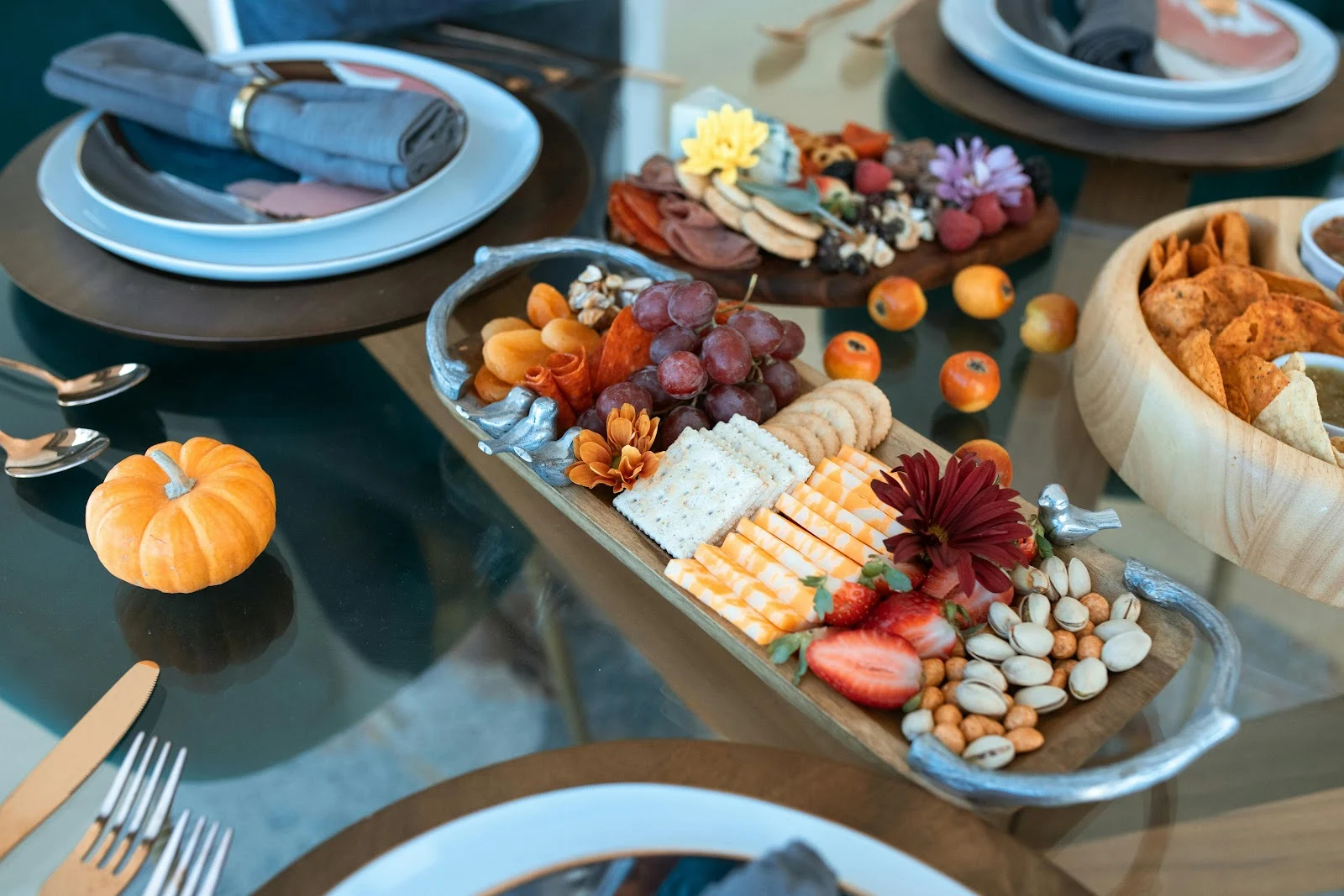Behind the Velvet Curtain – Operating a World-Class Luxury Restaurant
1. Zone-Based Operational Design
To deliver an elite dining experience, every part of the restaurant must operate with precision, consistency, and grace. Here's how each functional zone should be approached:
Lounge & Bar Operation
- Dedicated lounge managers and mixologists
- Signature cocktails, rare spirits, and custom glassware
- Controlled acoustics and lighting ambiance
Dining Room & Private Dining Room (PDR)
- Uniform table spacing for privacy and flow
- Tablet or AI-based menu suggestions
- Sommeliers and table captains for personal service
Kitchen Layout & Culinary Workflow
- Zoning: Hot line, cold kitchen, pastry, plating, and dish return areas
- Silent operation: sound-dampening equipment and movements
- Sous-vide and molecular cooking stations for innovation

A premium selection dishes on the table
Changing Room & Facilities
- Separate high-quality changing areas with lockers
- Wellness corners or resting zones
Washroom & Hygiene Area
- Touchless fixtures, scent engineering, and ultra-clean protocols
Prayer Room
- A clean, private, clearly marked room with wash area
- Designed with cultural sensitivity for Muslim guests
2. Halal Section
- Dedicated storage, preparation, and cooking equipment
- Certified Halal suppliers with documentation
- Staff SOPs to prevent cross-contamination
- Optionally, a separate Halal menu with curated luxury dishes
3. Staffing & Training
- Executive chefs with international exposure
- Servers trained in etiquette, wine service, and guest psychology
- Language-skilled staff for multilingual service
- Performance review systems and reward programs

Served with Expensive caviar on table for customers
4. Smart Inventory & Supply Chain
- Digital stock tracking with real-time alerts
- Contracts with premium suppliers (organic farms, rare seafood)
- Sustainable procurement strategies
5. Health, Hygiene & Food Safety
- HACCP and ISO 22000 compliance
- Routine kitchen audits
- Personal hygiene checkpoints for staff
- Emergency protocols and insurance-backed practices
6. Revenue Model & Profitability Strategy
- Reservation-only or invite-only model
- Tiered dining experiences (tasting menus, chef's table)
- Seasonal promotions and curated event packages
- Private dining events and brand partnerships
7. Client Loyalty & Retention
- Black card or membership programs
- Concierge services and lifestyle integration
- Anniversary, birthday, and elite guest notes tracked in CRM

Elegant dining room designed for exclusivity and comfort
8. Cross-Departmental SOP Integration
- Shared SOPs for hosts, servers, kitchen, cleaning, and security
- Daily briefing meetings and coordination software
- Escalation matrix for guest issues
9. Security, Privacy & Parking
- High-definition CCTV with guest area blind spots
- Bodyguard-friendly seating zones
- Gated parking, license scanning, and valet QR system
Closing Note
Running a world-class luxury restaurant isn't about serving expensive food—it's about orchestrating excellence at every level. From the kitchen to valet, each touchpoint is part of a carefully curated narrative.
If you're enjoying this deep dive into building an ultra-premium restaurant, don’t miss Part 2 Behind the Velvet Curtain: Operating a World-Class Luxury Restaurant. It takes you inside the daily operations—from elite staffing and kitchen zoning to halal service, inventory tech, and guest retention strategies. → Continue readin Part 2
Let us know in the comments or via email what you'd like to learn more about next: menu costing, chef hiring, Michelin pathway, or luxury event catering.
